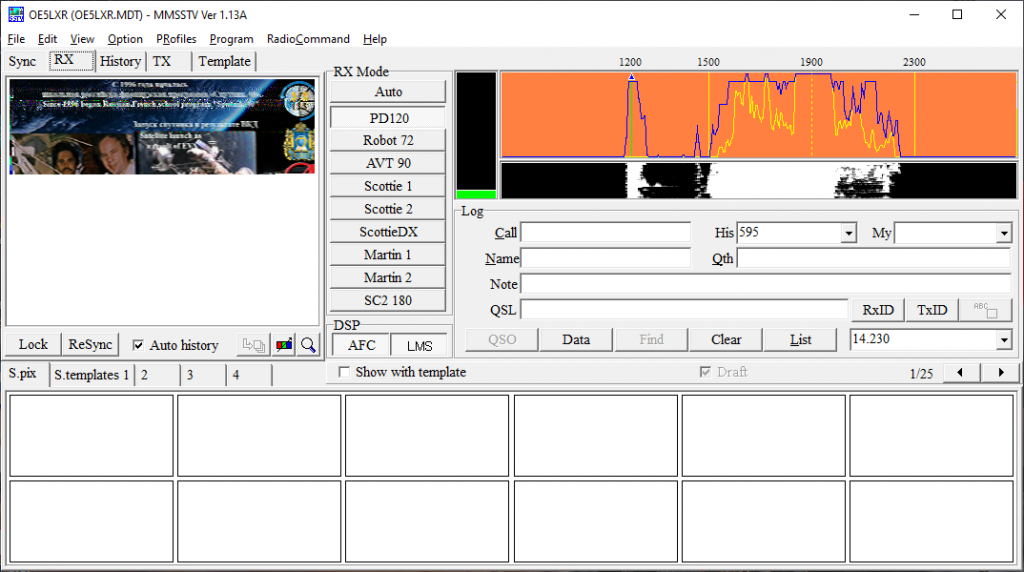
It looks like the ISS went below the horizon towards the end of this one. If you get one this good you're doing really well. You can monitor how well everyone else is doing by looking in the #sstv hashtags on social media. These are great fun to participate in and often there’s some healthy competition between people to see who can receive the pictures with the most clarity. The ISS usually takes about 10 minutes to fly from horizon to horizon when it passes over your home and so, each time, you can usually get several images. Typically a picture is transmitted continuously for about two minutes with two minutes of silence before the next picture starts. The International Space Station has a long history of transmitting SSTV pictures for global events, each lasting several days, where people the world over tune their radios to the ISS and try to receive the pictures every time it flies over their home. The audio is transmitted using radio and converted back into the picture at the other end using special software. A transmission consists of horizontal lines of pixels, scanned from left to right, encoded as audio.

It uses frequency modulation, where the frequency of a tone shifts up or down to designate pixel brightness and colour. Similar to a fax machine, or a 90s dial up modem, SSTV is an analogue audio signal that sounds like a high pitch racket of bleeps and screeches.

Have you ever wanted to receive a radio signal from space? It's fun and actually a lot easier than you might think! What is Slow Scan TV?


 0 kommentar(er)
0 kommentar(er)
